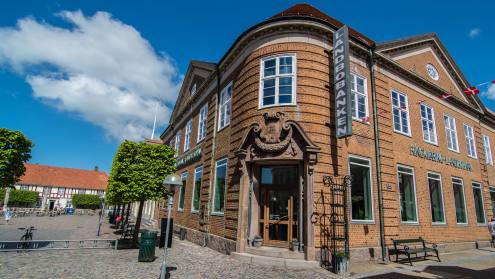The chairman of the Netherlands’ second largest bank, Rabobank, likes to be different. He is also proud of his bank’s unique characteristics. True to the bank’s roots as a rural co-operative, Bert Heemskerk is keen to discuss Rabobank’s positioning not only as a universal bank in the Netherlands, but also as “the leading global food and agri bank”. He also notes the bank’s prestigious AAA rating and the flexibility gained by not being a listed company and being able to take a long-term perspective.
While the Netherlands still accounts for 74% of the bank’s activities and domestic retail 51%, Rabobank’s distinct “food and agri” flavour can best be seen its international strategy and recent acquisitions. Rabobank is active in 37 countries with 300 branches but, unlike other banks, its country and retail focus is targeted at attractive agricultural sectors where it believes it can add real value.
Developed markets
The front line of this strategy is the stable, developed markets of the US, Australia and Canada. Perhaps surprisingly to some, Rabobank is the biggest bank in Australia in the food and agri business. With California described as the “biggest agricultural nation in the world”, Rabobank has bought two community banks that hold excellent opportunities for its food/agri/retail strategy and Mr Heemskerk is looking for more acquisitions in Australia and Canada. Rabobank owns three banks in California with more than 100 branches. Last month, it paid $851m for Mid-State Bank & Trust (41 branches) after acquiring Community Bank of Central California (14 branches) earlier in the year.
The second line of attack is central and eastern European countries with agricultural potential, including Poland, Romania, Turkey and Ukraine. Rabobank hopes to acquire a majority of Poland’s BGZ soon but was disappointed by its recent failed bid for Turkey’s Sekerbank and the high prices in Romania.
The third front is growing emerging countries with substantial agricultural sectors, such as Brazil, India, Indonesia and China. The very conservative Dutch bank is willing to invest relatively less there but nevertheless has undertaken a spate of recent acquisitions in Indonesia and China. In July, Rabobank agreed to buy two Indonesian banks, Bank Haga and Bank Hagakita, which together have a network of 78 branches and strong potential in the agriculture and retail sectors.
The importance of Asia is also underlined by Rabo’s acquisition in July of a 10% stake in China’s United Rural Co-operative Bank of Hangzhou located in the capital of Zhejiang Province.
As the first foreign bank to take a stake in one of China’s rural co-operative banks, Mr Heemskerk believes Rabobank can play a key role in building financial services in China’s less developed rural areas. “We were founded by poor farmers 140 years ago and we know what is needed to develop rural banks,” he says.
He hopes to have stakes in three banks in China in two years’ time.
Backing microfinance
Elsewhere, Mr Heemskerk is keen to use Rabobank’s agricultural skills to manage banks in developing countries and the bank has taken minority stakes in rural banks in Tanzania, Zambia and Mozambique. But again Rabobank takes a distinct stance: “We have e100m in participations in Africa but we write them off immediately, we don’t look to them for revenues, we want to help the system. If we were listed, we could not do this.”
Mr Heemskerk also has forthright views on microfinance institutions. “Microfinance is not a commercial business but it can be useful in helping to create a fully fledged banking business,” he says.
How much can Rabobank’s international business grow? The chairman believes that business outside the Netherlands could double to reach 50% by 2012 using its food/agri/retail strategy and co-operative model. While its return on equity, at 9.1%, and net profit growth of 13% may seem modest, the bank’s unique structure and approach provide a different long-term perspective that is likely to survive well not only in expanding China, but also in a more consolidated European banking sector.











